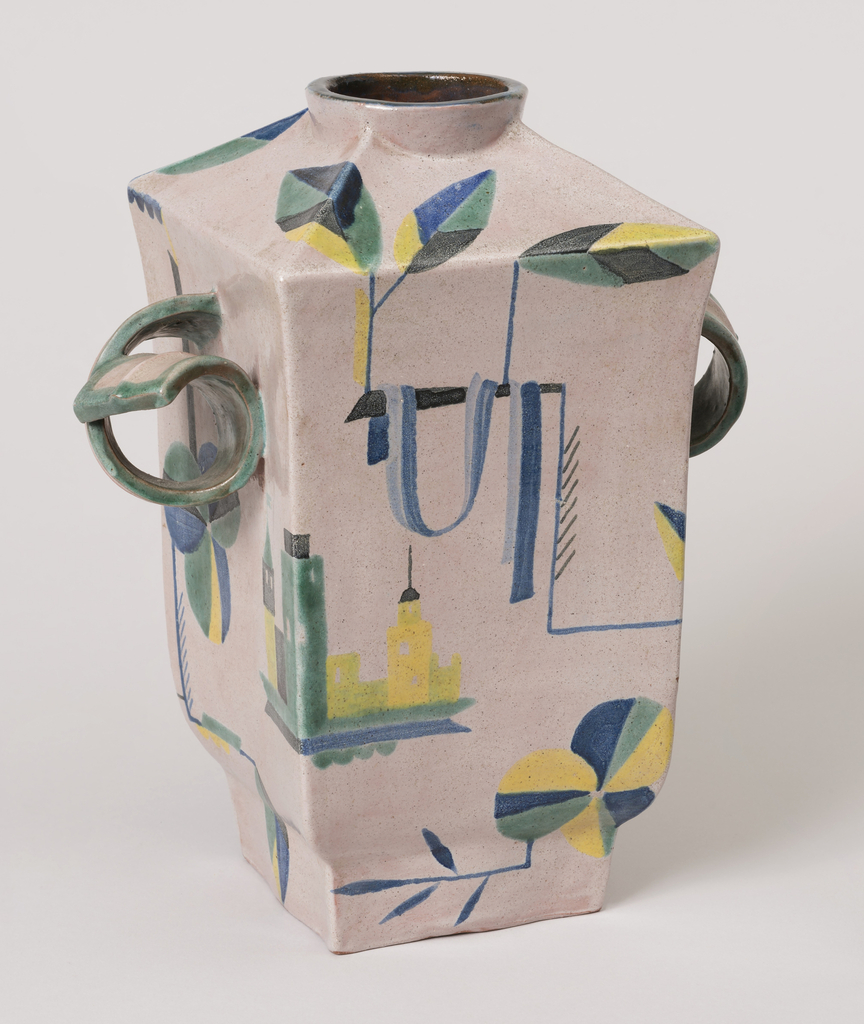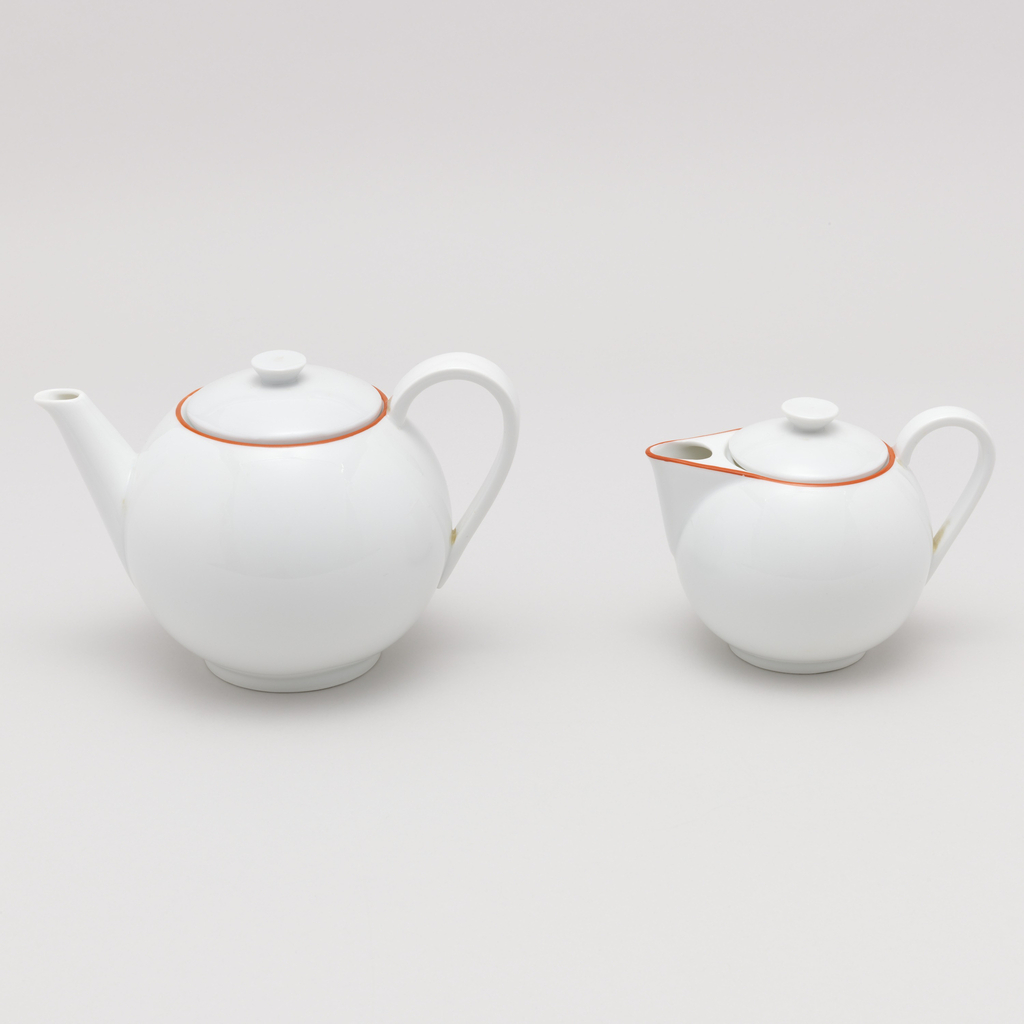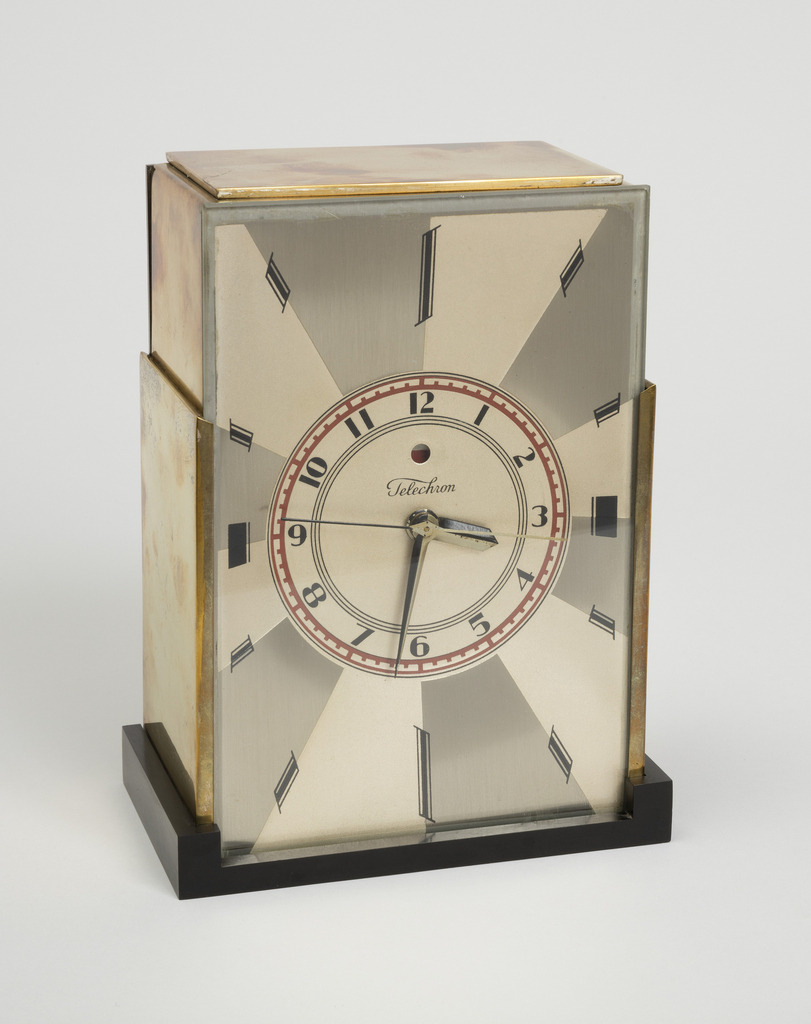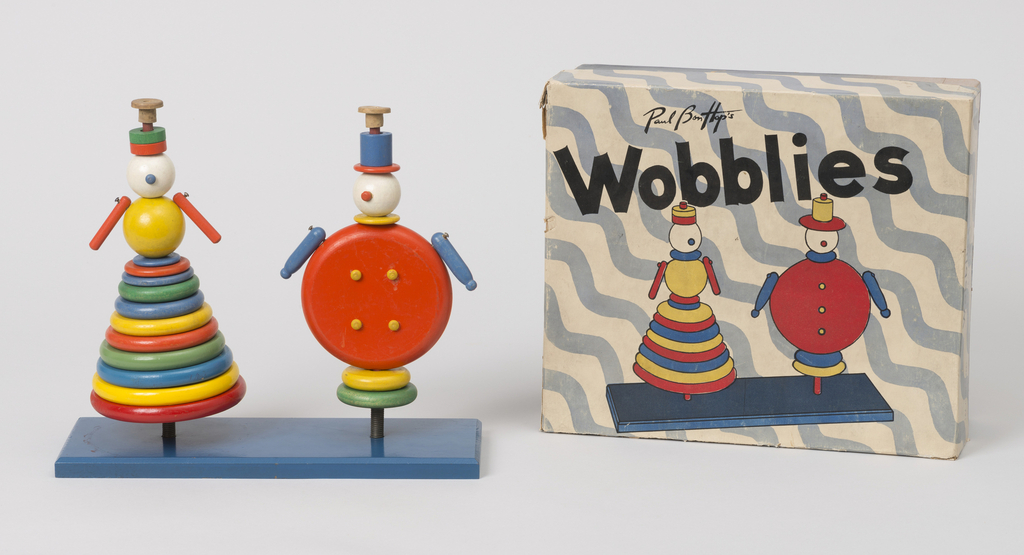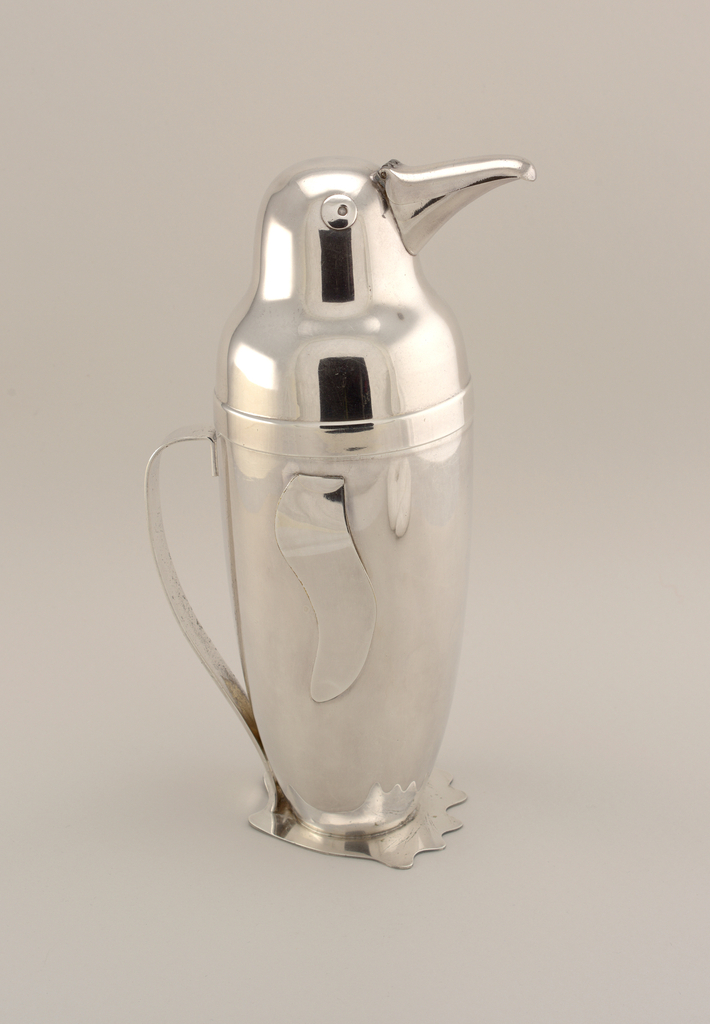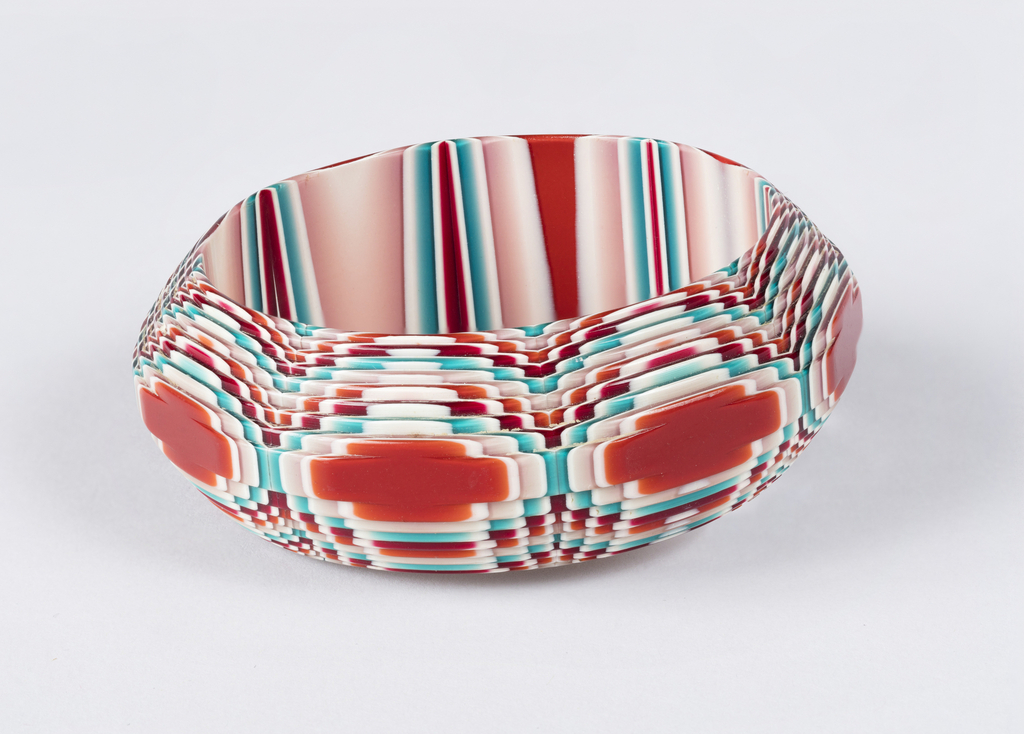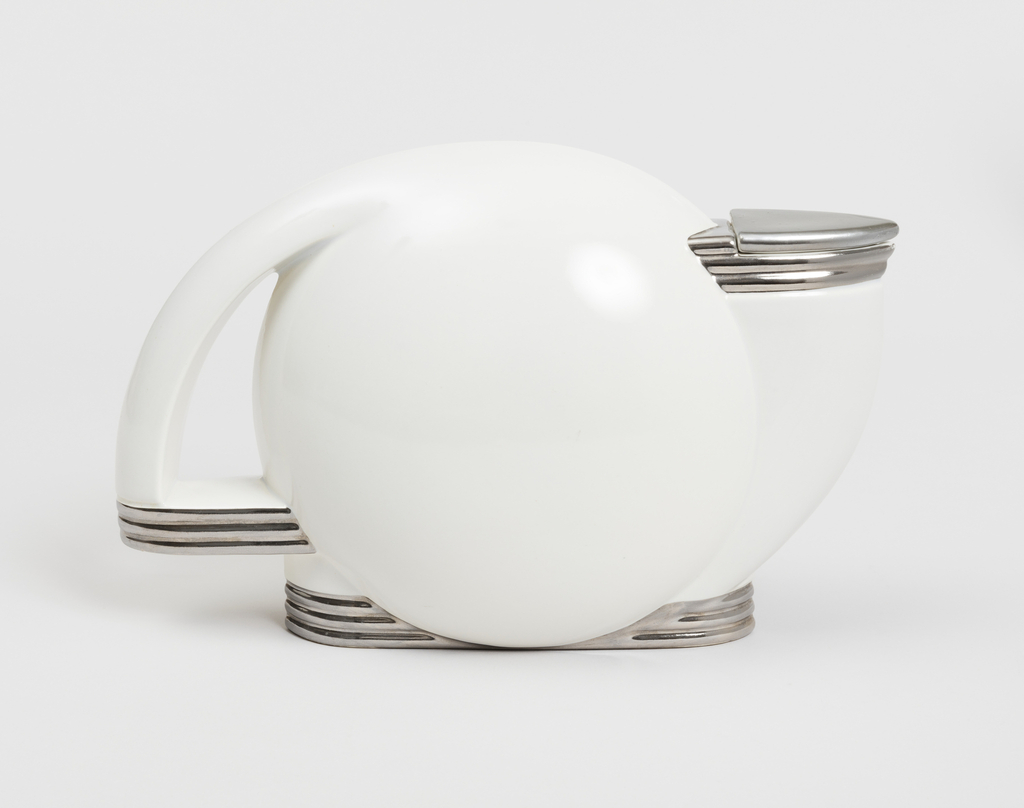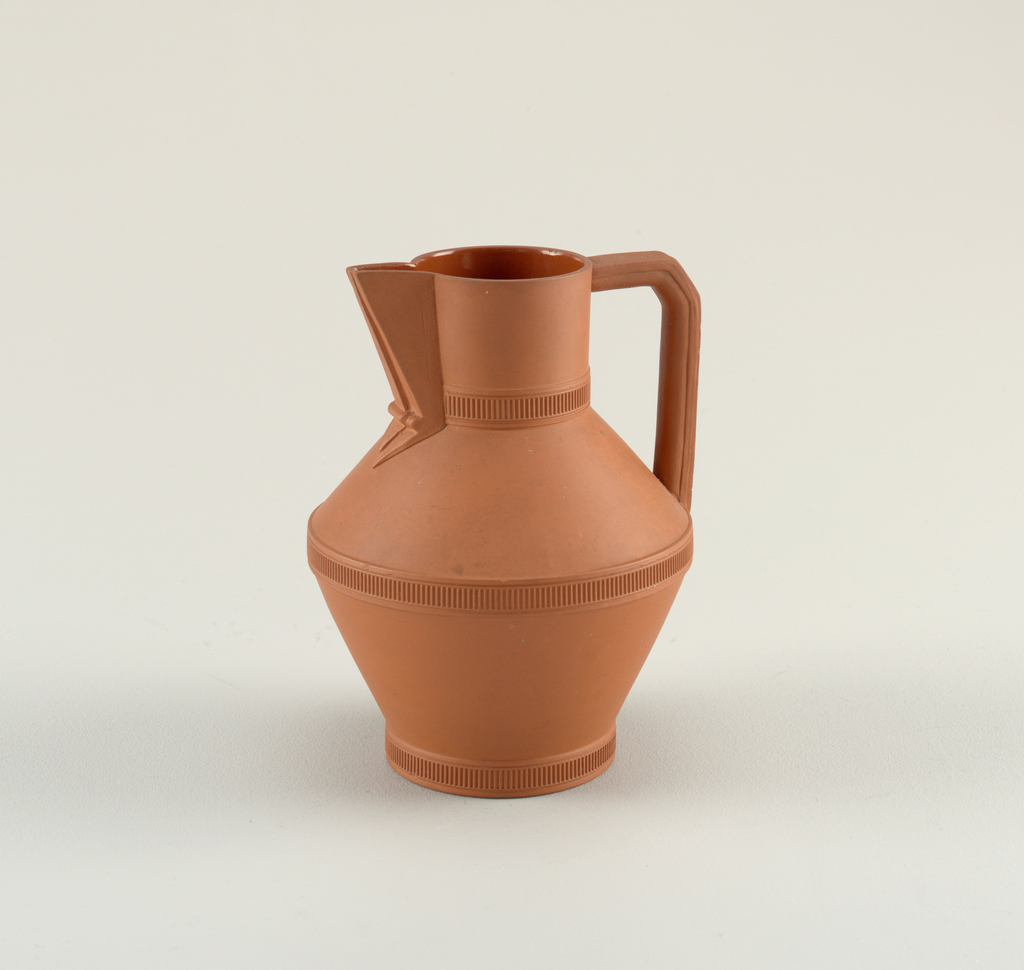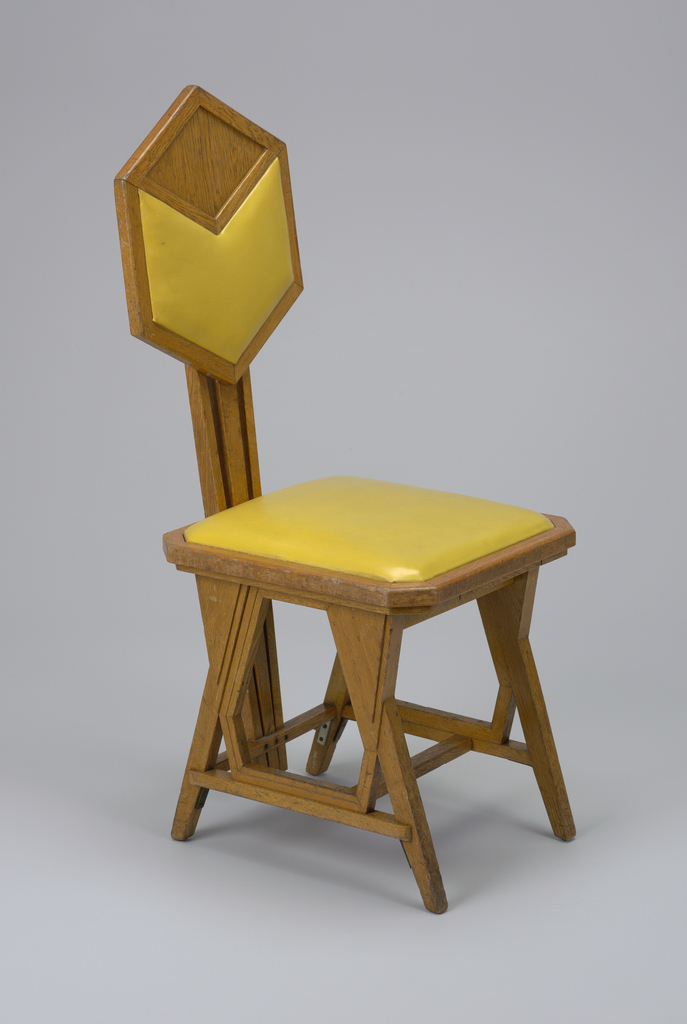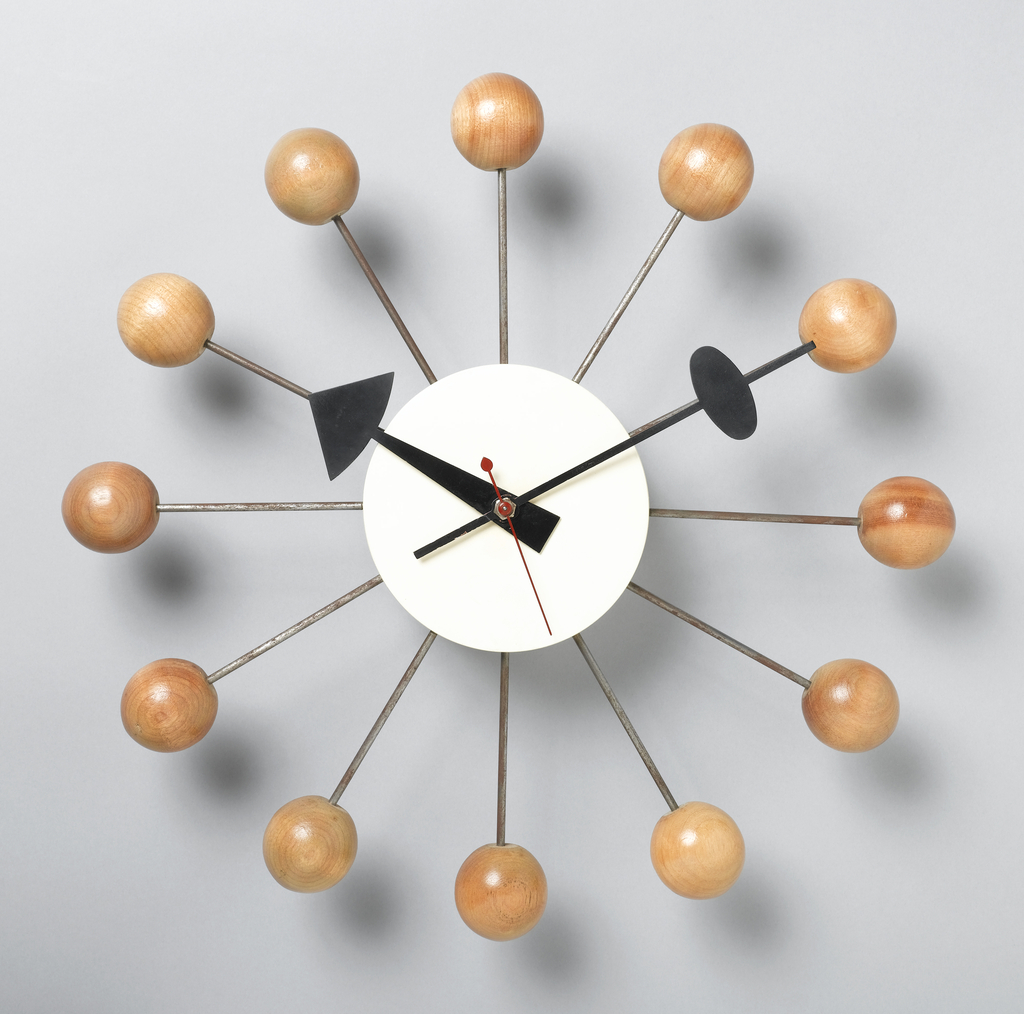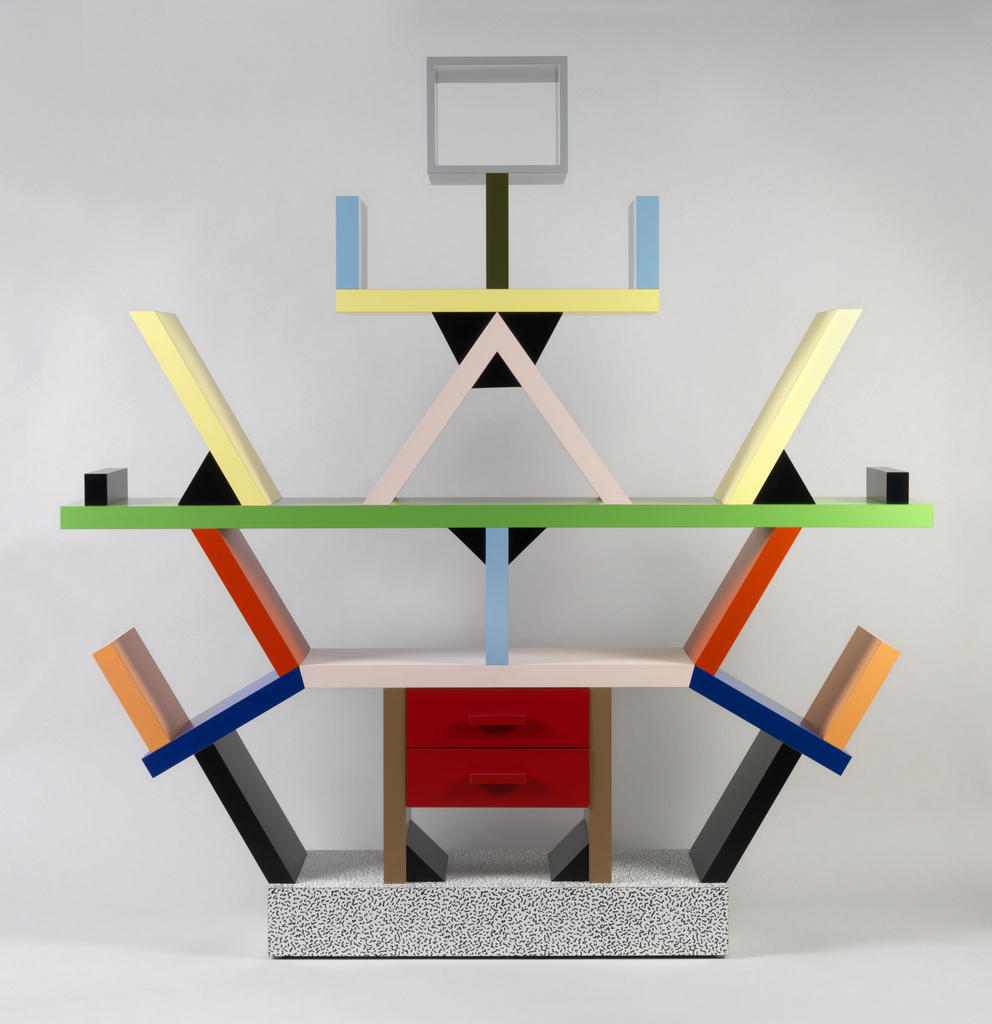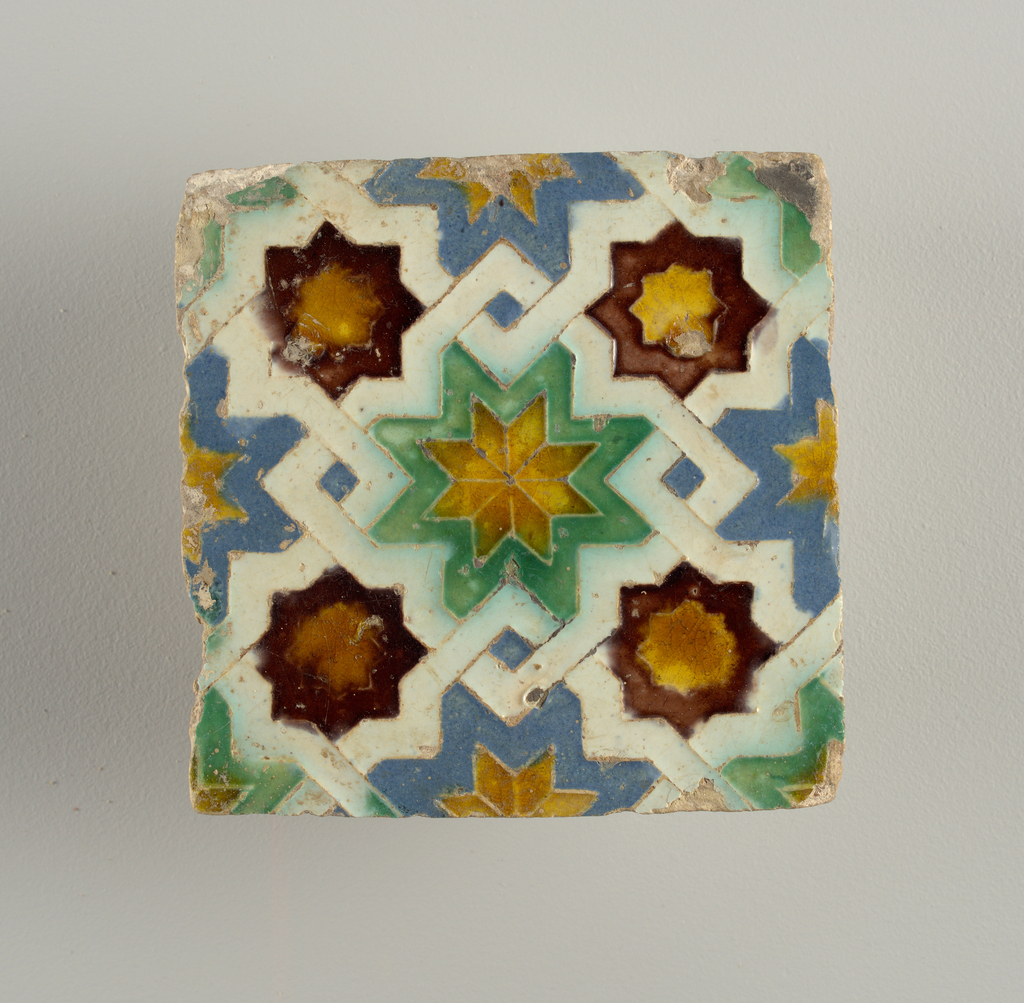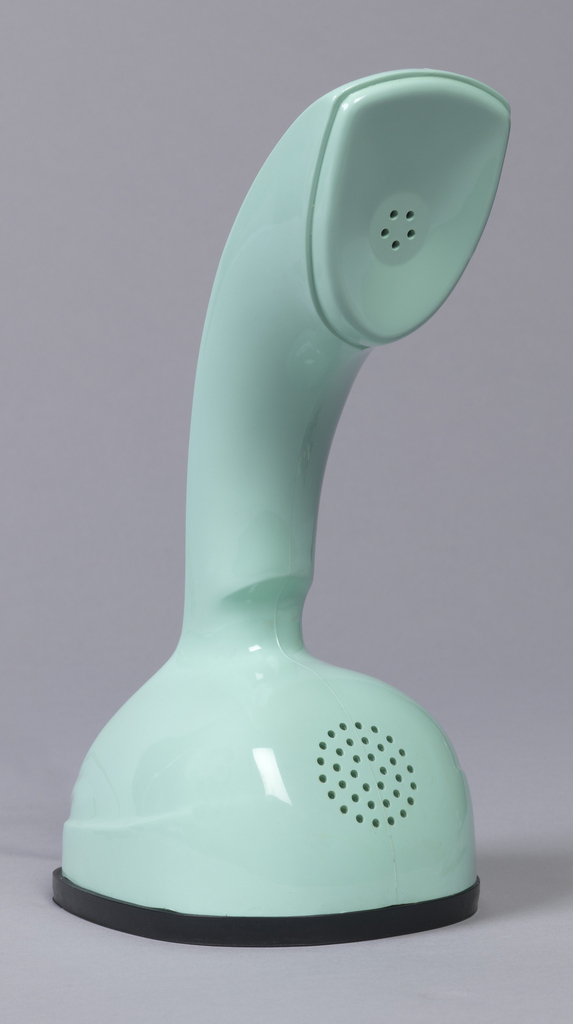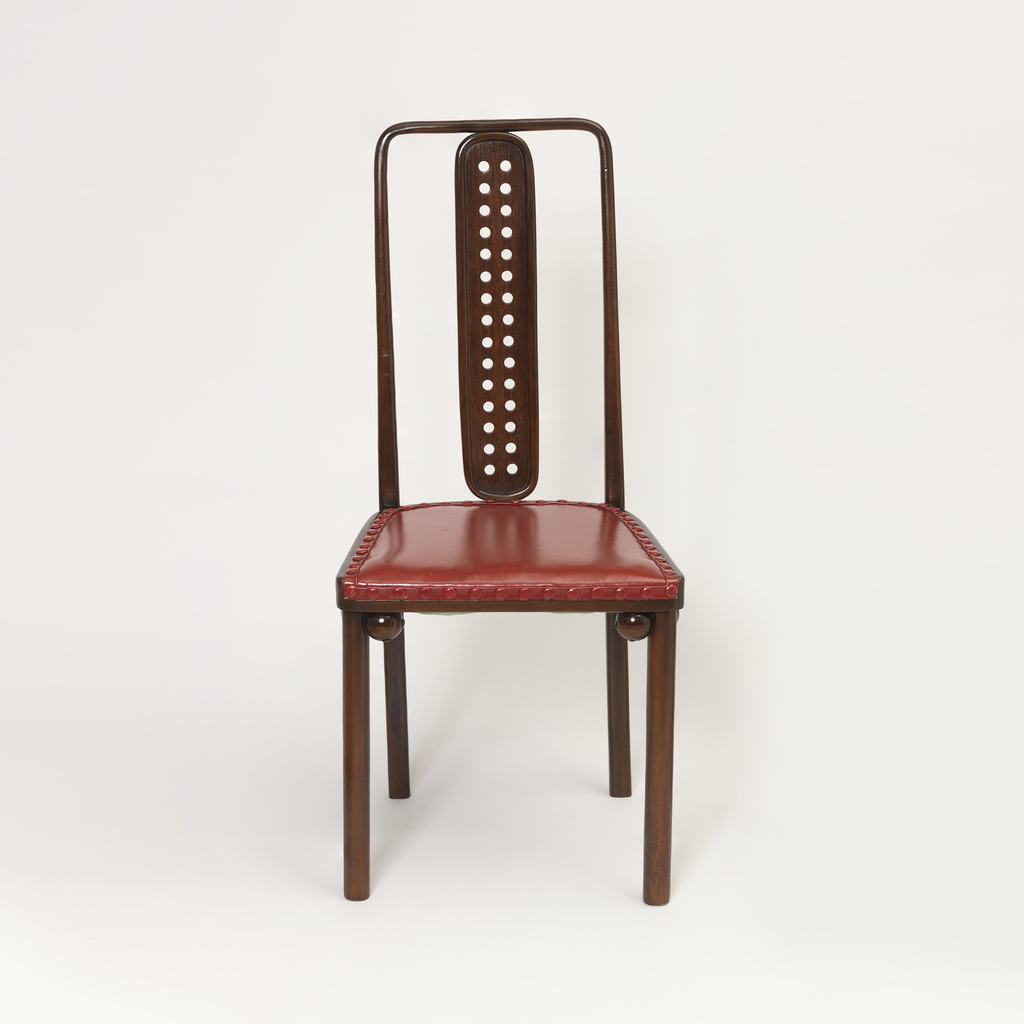Modern Viennese design greatly influenced American style during the Jazz Age. This vase, currently on view in the The Jazz Age: American Style in the 1920s, chronicles this dialogue in the history of modern design. Remarkably, it was one of a pair originally offered in the short-lived Wiener Werkstätte showroom in New York City. Established in 1921...
Now on view in The Jazz Age: American Style in the 1920s, this mocha pot by Ladislav Sutnar effortlessly combines functionality with modern design.
Now on view in The Jazz Age: American Style in the 1920s, Paul T. Frankl's "Modernique" clock design provided the perfect form for ingenuity in timekeeping.
The Wobblies show their wobbliness, which is cleverly illustrated on their box by faint wavy blue lines. Interestingly, there are two definitions of the word wobbly. The first is “inclined to wobble; shaky.” A Wobbly (capitalized) is also “a member of the Industrial Workers of the World, an international, revolutionary industrial union founded in Chicago...
In a scene from the 1934 film, The Thin Man, retired detective Nick Charles (William Powell) demonstrates to a group of bartenders the skills needed to shake a good cocktail. While vehemently shaking a cocktail shaker with one hand, he says to them, “See, the important thing is the rhythm, always have rhythm in your...
Lea Stein’s laminated celluloid jewelry designs joyously celebrate the materiality of plastic. Fusing together thin sheets of brightly colored acetate to create elaborately layered designs—seen here in this bracelet from 1970—Stein and her husband, Ferdinand Steinberger, developed this process in the late 1960s. Steinberger was a chemist who invented this new chemical process, which allowed...
In a December 2016 visit to Cooper Hewitt, George R.Kravis II converted the Promised Gift of this teapot to a gift, joining a large group of objects that helps tell the story of twentieth and twenty-first century design, much of which represents the best of design often for everyday use. It is the first piece...
During the Victorian era, Christopher Dresser vigorously designed household objects in a multitude of materials. He designed ceramics, metal, glass, and much more. This versatility was part of his brilliance as a commercial designer. While paying attention to both ornament and form throughout his career, Dresser’s attention shifted more toward form after visiting Japan in...
Echoing the larger artistic vision of Frank Lloyd Wright’s Imperial Hotel in Tokyo, this chair was designed for the hotel’s Peacock banquet room in the early 1920s. Amongst the 700 drawings that exist for the hotel, most are for its interior, showing how significant its design was.[1] The chair’s hexagonal back and square seat reflect...
Recognizable for its resemblance to an atomic model with wooden spheres attached to the metal rods jutting out from its face, the Ball Clock (model 4755) is, unsurprisingly, sometimes called the “Atomic” clock. Designed by George Nelson Associates for the Howard Miller Clock Company in 1949, the Ball Clock was made by the company through...
The No. 2402 bowl, shown here in what the Fostoria Glass Company called “ebony,” is one of eight pieces of glass tableware designed by George Sakier in the museum’s collection. The bowl was made in 1930, just a year after Fostoria hired Sakier to be their main design consultant. The avant-garde look of this bowl...
Ettore Sottsass Jr.’s iconic Carlton cabinet—sometimes referred to as a “sideboard” or “room divider”—is one the designer’s most recognizable works. Its anthropomorphic form is thought provoking and yet childishly simple. The Carlton cabinet’s playfulness is asserted in its mix of garish colors, patterns, and mass-market materials—plastic laminate and wood. When Sottsass designed this piece for...
Likely dating from the early to mid sixteenth century, this tile illustrates Spain’s rich multicultural design history. Spain’s remarkable decorative pottery tradition originated during the eighth century when the country was conquered by the Moorish Muslim troops of North Africa as part of the expansion of the Umayyad Caliphate. This sixteenth-century tile shows how influential...
There is no questioning the significance to twentieth-century industrial design of the Ericofon telephone, whose one-piece design makes it a predecessor of both cordless telephones and cell phones. Introduced in the United States in 1956, the Ericofon was originally conceived by Ralph Lysell in 1941 and was redesigned by Lysell, Hans Gösta Thames, and Hugo Blomberg for...
A ubiquitous figure in design history, Josef Hoffmann had a career that spanned more than 50 years. The Austrian architect-designer created this chair for the dining room of the Purkersdorf Sanatorium, located just outside Vienna, and built between 1904 and 1906. Hoffmann designed both the sanatorium’s austere exterior and much of its interior. Hoffmann worked...
